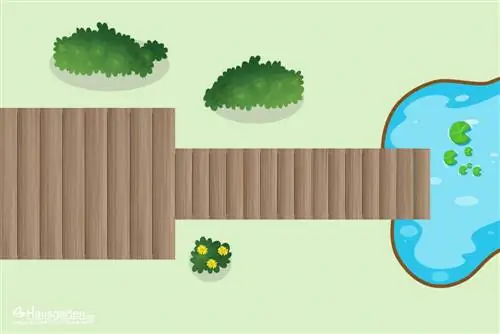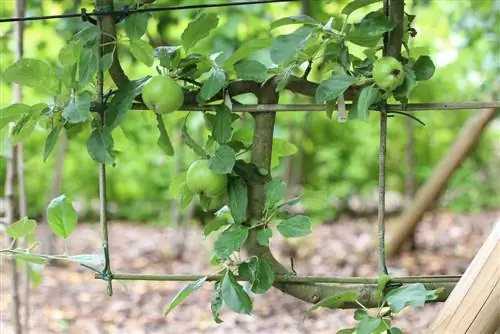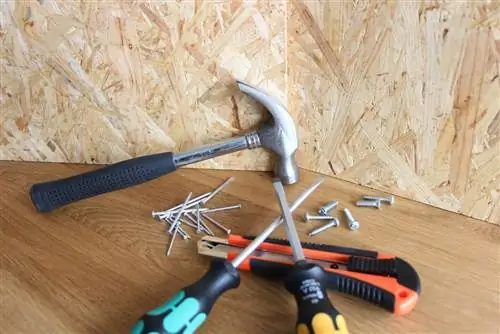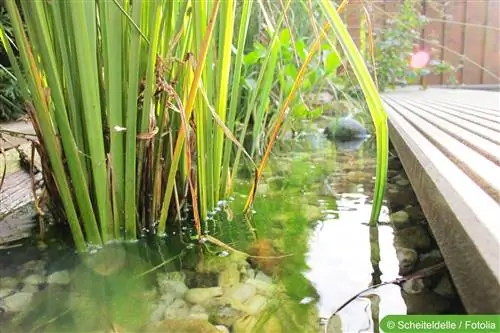- Author admin [email protected].
- Public 2023-12-17 03:39.
- Last modified 2025-01-24 12:45.
The pond is one of the most popular forms of garden design. Depending on the size, it can be decorated with a variety of wooden structures, such as a bridge or a pavilion. A dock is a great idea to create a little more space by the pond or a unique decorative element that exudes charm. You can easily implement this idea yourself.
Planning
Preliminary planning is very important so that your pond dock ultimately fits and is accessible. The shape and location of the footbridge in particular must be planned precisely in order to prevent possible problems with placement and implementation. For this reason, you should think about the following points beforehand:
Location
It is best to choose a location that has enough space for the wooden structure. You are offered two options for the foundation:
- Point foundation
- Concrete foundation
Point foundations are ideal for bridges of all sizes, especially for smaller versions. For a short bridge you only need four point foundations on which the substructure is fixed. The larger the bridge becomes, the more point foundations you need for the entire structure. A big advantage of these is the ability to use them even on steep slopes if you want your jetty to be elevated over the bank. Accordingly, longer piles are required. A concrete or slab foundation, on the other hand, is effective for larger bridges. Since every jetty requires a wooden structure on the bank to balance the weight, concrete foundations are better for large or long jetties. The substructure can be built on these without the help of piles, but is not suitable for sloping banks.
Shape
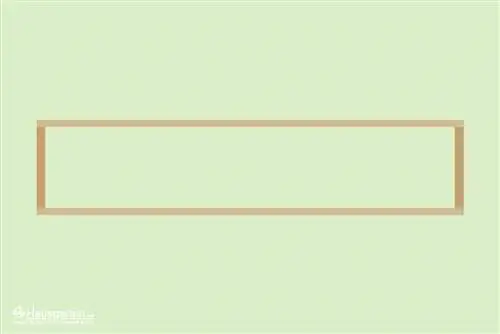
The shape of the bridge is also important. If you want a walkway that runs straight from the waterfront terrace, you'll need a lot less work than a slanted shape. The smaller your pond is, the less complicated your pond dock should be, as more space is usually required for sloping shapes. Likewise, shorter walkways can often be placed without a terrace as they work well on their own and do not require a counterweight.
Ptakes
You have to be careful with the stakes. Stakes intended to support the dock well above the water are not easy to place as they cannot be driven into the ground due to the necessary use of a pond liner. This is only possible if you have a natural pond that does not require a pond liner. Otherwise you will need a composite mat through which you can then place a foundation in the pond.
These elements allow you to determine exactly how your bridge will be constructed. This saves you a lot of headaches and you can start building the wooden walkway straight away after you have planned and implemented the foundation. It is even possible to have walkways that run through the entire garden and lead to the pond, inspired by dune paths. Make sure that the free-floating part of the dock cannot be longer than half if you do not want any posts in the water.
Tip:
Alternatively, you can build the footbridge without laying a foundation if you already have a paved concrete surface. Then you can easily place the beginning of the bridge on it and attach it.
Materials and tools
For your own pond dock you will need the following materials and tools:
- Decking boards for the jetty
- Construction or squared timber for the substructure
- Cordless screwdriver
- Allowances
- Forcing
- Mounting angle
- Spirit level
- Angle connector
- Hand-held circular saw (can be rented from hardware stores for around 18 euros per day)
- Angle measure
- Inch ruler or ruler
- matching screws made of stainless steel with self-drilling tip for wood
- matching screws made of stainless steel with self-drilling tip for concrete; alternatively dowels, concrete drill, drill and screws
- Weather and winter protection: wood oil, glaze or wood protection gel
- Chisel
- rubber hammer
- PU/PUR glue
- Wooden, concrete or stainless steel posts if you choose a dock that needs support
- pencil
- Pond liner as protection against weeds
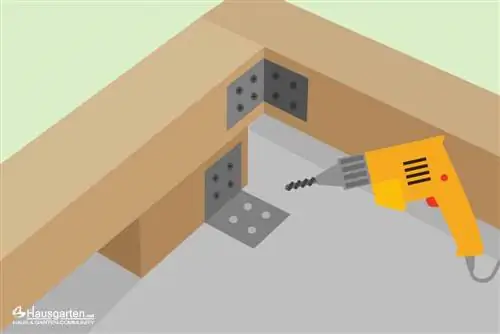
You see, building your own wooden walkway is not exactly a small amount of work. When choosing wood, you must make sure to use suitable wood that can be used for a pond dock. These include the following types of wood:
- Pine
- Larch
- Douglas fir
- Robinie
- Teak
- Bankirai
A big advantage of all these woods is their resistance to moisture, which is of course important for a pond dock. You can of course use cheaper wood for the substructure, but it always looks better if it is made of the same material. The cheapest are usually the local softwoods, which are available in the form of a decking board for around 15 euros per square meter. Bankirai or teak, on the other hand, can easily exceed the 60 euro mark. When choosing decking boards, you should choose a grooved surface as they have an anti-slip effect. When selecting the stakes for the protruding part, the heavier the decking boards, the thicker the stakes must be. The material requirements for the substructure and the decking are calculated as follows:
- Decking boards: length in m x width in m=area of the bridge in m² + 10% for the waste
- Example: 3 m x 1 m=3 m² (3.3 m² with waste)
You need the following materials for the substructure:
- 2 pieces of wood the length of the bridge (longitudinal beam)
- several crossbars
The number of crossbars is determined by the length of the bridge. The distance between the crossbars must be around 50 centimeters. This means that for a 3 meter long and 1 meter wide walkway you will need five or six crossbeams. It doesn't matter if you buy more material than you need. This is recommended for this project because excess wood is simply removed with the saw at the end.
Tip:
Even bamboo can be used as a possible wood for decking. These are highly weatherproof and can be easily used for the jetty.
Preparation
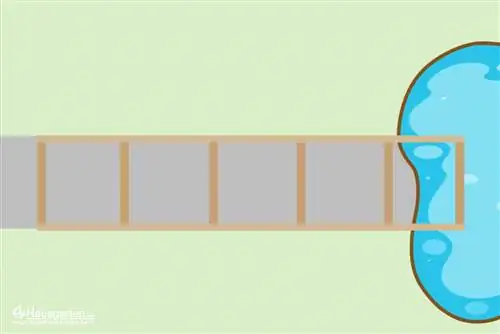
The preparation is necessary so that you can start building the jetty without any problems. Preparation primarily includes completing the foundation, without which the pond dock cannot be constructed. Of course, purchasing the material is just as important. Depending on your material requirements, it may take some time for certain quantities to reach you if you order the wood online. The problem may be that there is not enough wood available in the hardware store. One step you shouldn't forget is emptying the pond if you use poles. Proceed as follows:
- Store pond inhabitants in suitable containers before emptying
- then pump out the pond
- now you have to wait until the pond dries
- then you can set up the point foundations
- do not refill with water until the jetty is completed
If you have a natural pond without a liner, you don't have to take this step because the piles are driven directly into the bottom. Of course, you should pay attention to aquatic plants and inhabitants. Last but not least, you need to determine the right time. This is important for winter protection, which is applied after construction. Although you can easily set up the walkway in the rain due to the weather-resistant wood, the wood takes a long time to dry afterwards. The winter protection must not be used on a rainy day, otherwise it will immediately be washed away by the rain. It is therefore advisable to carry out the construction in dry weather.
Building a pond dock: instructions
After gathering the long list of materials and tools, completing the foundation, and having nice weather, you can begin building the jetty. The following instructions will guide you through the individual steps until you can relax on your own pond dock:
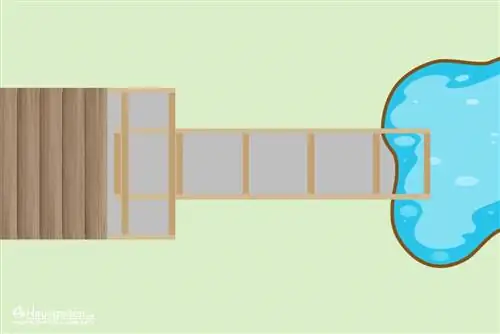
1. Start by building the substructure. If you have not yet cut the individual pieces of wood, measure them now and cut them into the required size with the saw. When cutting the cross beams, make sure that they are measured so that they fit directly between the longitudinal beams without exceeding the planned width. Be sure to use the spirit level and the square measure for this.
2. Now place the longitudinal beams parallel to each other and attach the first cross beam to one of the longitudinal beams using an angle connector. To do this, use the clamps and allowances so that the wood does not shift while screwing. Continue doing this until you have connected the two longitudinal beams with two cross beams at the beginning and end. You should now have a rectangle or square, depending on the dimensions of your bridge, as a substructure in front of you. Use the screws for wood for this step.
3. Now place the frame on the foundation. If you do not use point foundations, you should underline the frame with wood at the corners and where the cross beams are placed. This means that the foundation does not rest directly on the concrete. Now use the mounting brackets and the screws for concrete and attach the frame directly to the foundation at the corners and where the cross beams are placed. This means that the bridge does not shift at the end.
4. Proceed with the remaining crossbars as described in step 1.
5. If you want to connect the walkway to an existing terrace, first remove the decking boards that point towards the pond. To do this, you should remove about half a meter of the planks so that you have two crossbars of the supporting structure of the terrace.
6. Now place the already completed subframe of the bridge over the two exposed crossbars of the terrace and mark the contact point on the frame and the terrace with a pen. There should then be 2 markings on each of the following crossbars:
- 2 exposed crossbars of the terrace
- 2 crossbars of the jetty that do not point towards the water
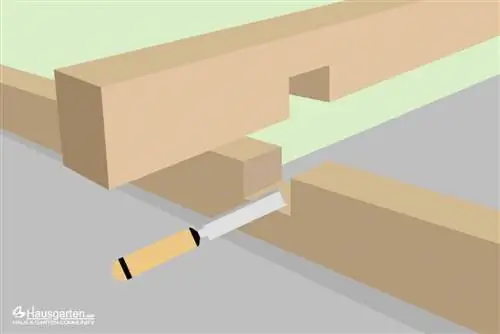
These are necessary for the notches that connect the footbridge to the terrace.
7. Cut these marks about halfway through the wood and use the chisel and hammer to carefully remove the marked area. But never cut the wood completely through. Use the chisel to rework the area as cleanly as possible. Then connect the bridge to the terrace using the notches and attach it with glue and one screw each.
8. After you have connected the walkway to the terrace or placed the subframe on the foundation, weed protection should now be done. This is only necessary if you don't want weeds under your footbridge or if you are using a point foundation. To do this, simply take the pond liner, spread it out under the subframe and fix the liner as usual.
9. If you want to use veneers, they must now be attached. Position this on the top frame angle with a clamp and screw it tight.
10. Now you can plank the bridge with the planks. To do this, place the decking boards on the frame and let them protrude by 30 to 40 mm. The distance between the planks should be about 5 mm. You can use small pieces of wood and place them in the joints to prevent the boards from shifting.
11. Screw the planks into place at each cross and longitudinal strut. Two screws per interface are sufficient for this. Auxiliary lines can be used so that the screws are all in one line.
12. Then check whether the floorboards are sitting correctly and are not drifting in one direction. If the bar is well aligned, the excess parts are removed with the saw.
13. Last but not least, treat the floorboards with weather and winter protection. Although these woods do not necessarily need winter protection, this protects the wood even more intensively. Two coats are completely sufficient here.
14. Depending on the product used, drying takes different times. Afterwards you can relax on your own new footbridge, because you could even equip it with a railing at the end.

